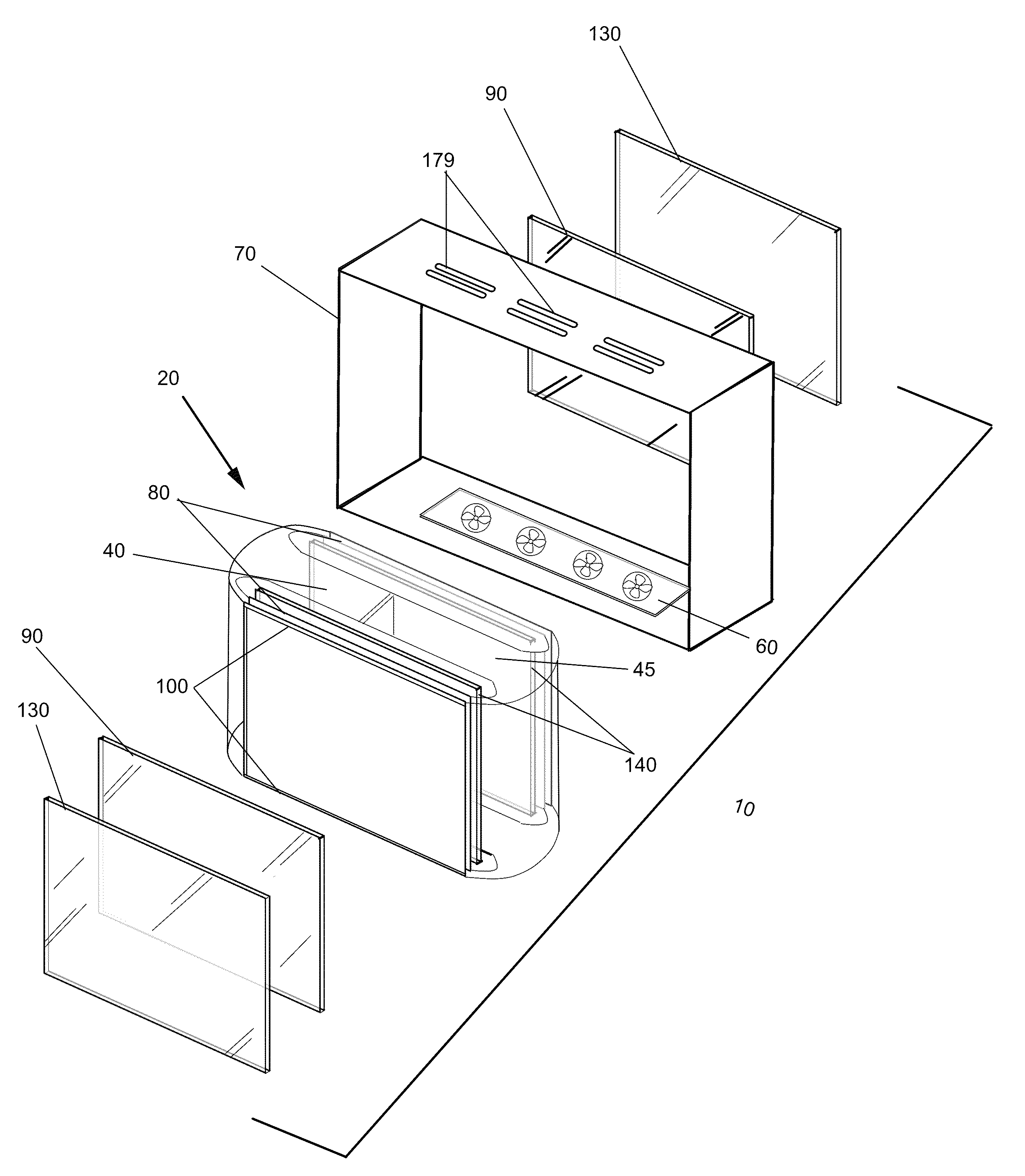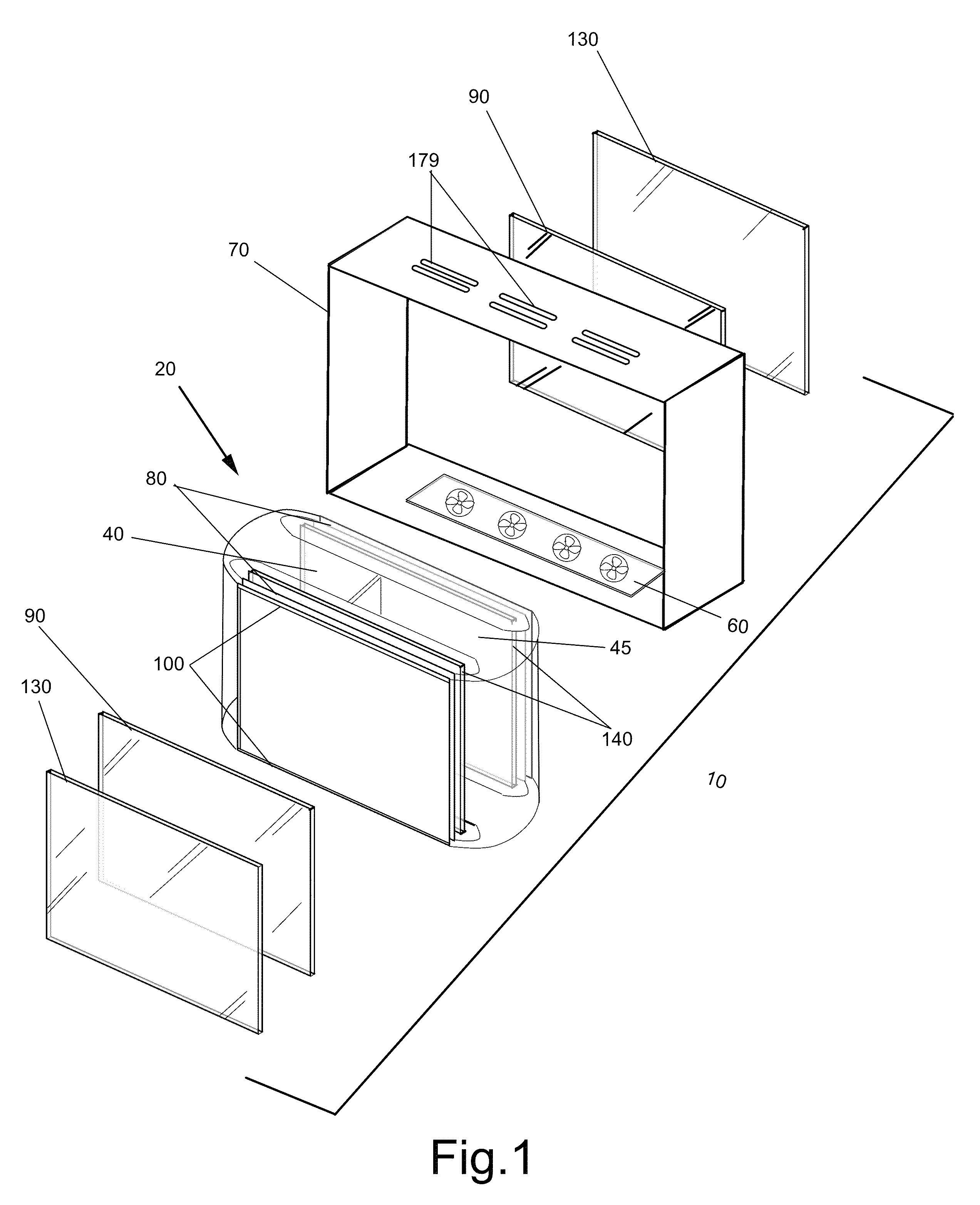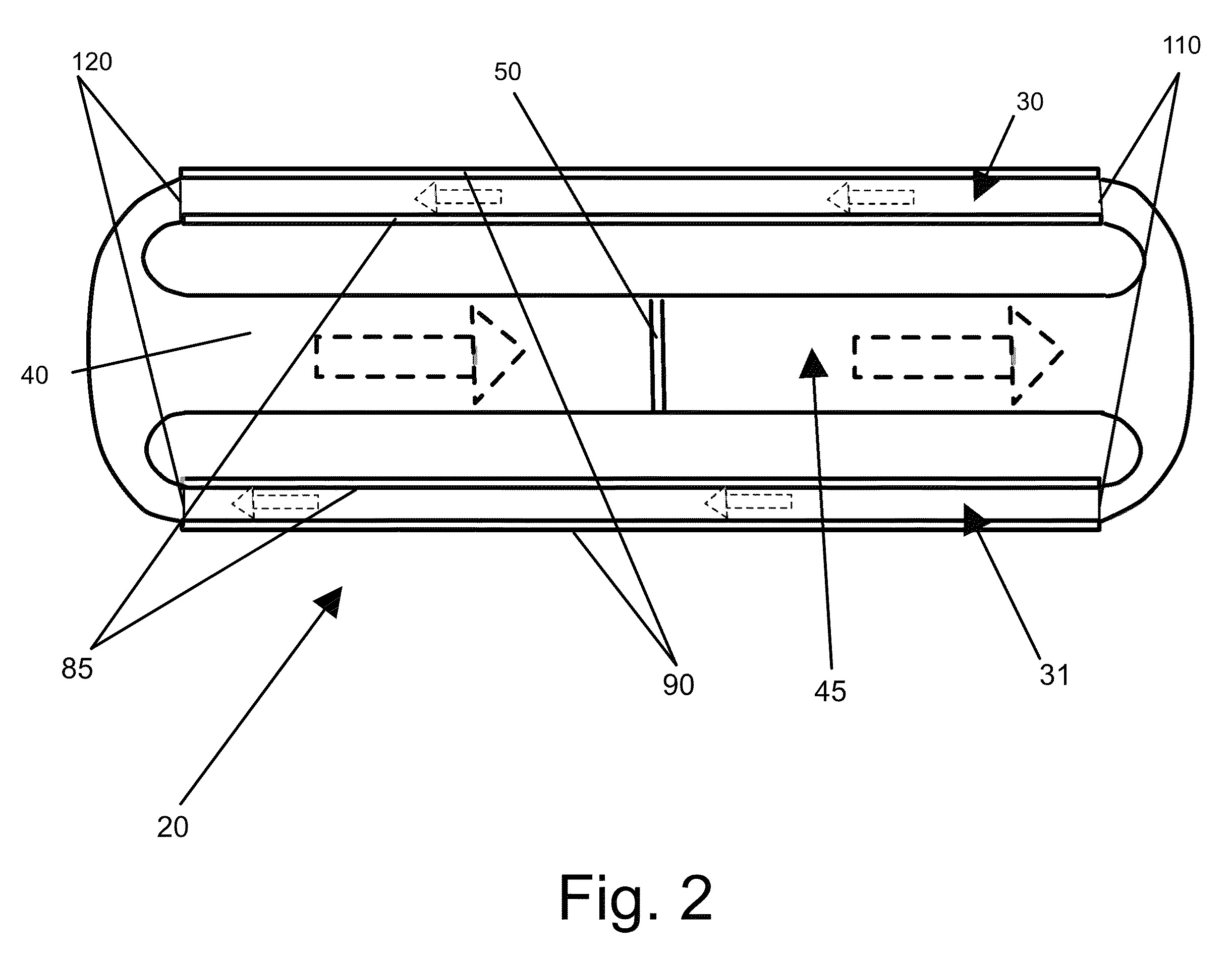Shared isolated gas cooling system for oppositely facing electronic displays
a technology of electronic displays and cooling systems, applied in the field of cooling systems, can solve the problems of inadequate system, insufficient cooling of the rear interior of the display, and the demand for large screen sizes of displays, etc., and achieve the effects of increasing heat production, bright backlights, and large fluctuation in temperatur
- Summary
- Abstract
- Description
- Claims
- Application Information
AI Technical Summary
Benefits of technology
Problems solved by technology
Method used
Image
Examples
Embodiment Construction
[0023]Referring to FIG. 1, the displays shown are equipped with an innovative gas cooling system. Accordingly, it may be placed in direct sunlight as well as warm ambient temperatures. As shown in FIG. 1 an exemplary embodiment 10 of the electronic display and gas cooling system includes an isolated gas cooling chamber 20 contained within an electronic display housing 70. In a preferred embodiment, the unit is substantially symmetrical with respect to the first and second gas chambers 30 and 31, thus features described for the first gas chamber 30 are similar to the features within the second gas chamber 31. Narrow transparent first gas chamber 30 and narrow transparent second gas chamber 31 may contain spacing members 100 and respective transparent front plates 90. A second transparent front plate 130 may be laminated to the exterior of transparent front plate 90 to help prevent breakage of front plate 90 or provide various optical properties (anti-reflection, polarization, phase r...
PUM
| Property | Measurement | Unit |
|---|---|---|
| power | aaaaa | aaaaa |
| sizes | aaaaa | aaaaa |
| sizes | aaaaa | aaaaa |
Abstract
Description
Claims
Application Information
 Login to View More
Login to View More - R&D
- Intellectual Property
- Life Sciences
- Materials
- Tech Scout
- Unparalleled Data Quality
- Higher Quality Content
- 60% Fewer Hallucinations
Browse by: Latest US Patents, China's latest patents, Technical Efficacy Thesaurus, Application Domain, Technology Topic, Popular Technical Reports.
© 2025 PatSnap. All rights reserved.Legal|Privacy policy|Modern Slavery Act Transparency Statement|Sitemap|About US| Contact US: help@patsnap.com



